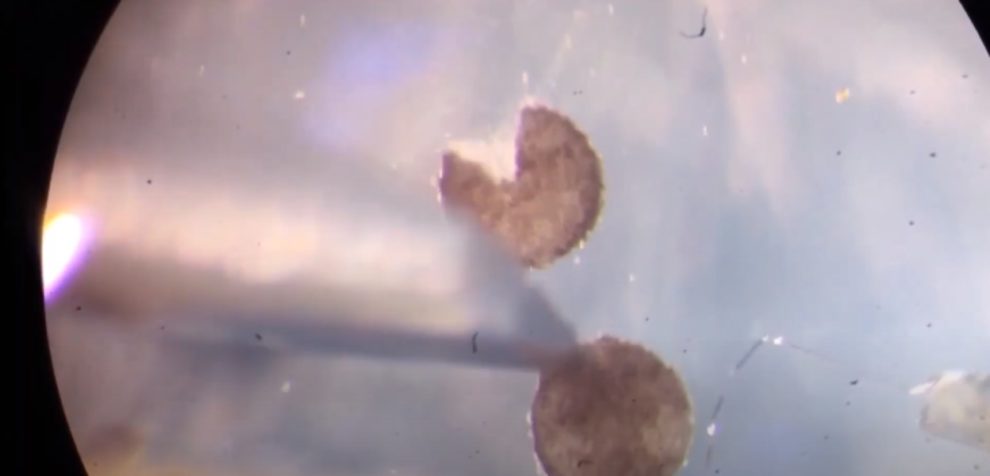A group of scientists from the University of Vermont (UVM) discovered a new type of reproduction in computer-designed organisms (CDOs).
The scientists in the US who created the first living robots say the life forms, known as xenobots, can now reproduce in ways that plants and animals cannot.
According to a university press release, in this new form of replication, these robots ingest single-cell organisms and release “babies” that look and move like them.
“People have thought for quite a long time that we’ve worked out all the ways that life can reproduce or replicate,” said study co-author Douglas Blackiston, the senior scientist at Tufts University, in a statement. “But this is something that’s never been observed before.”
The millimeter-wide Xenobots are made of living cells extracted from frog embryos.
“Frogs have a way of reproducing that they normally use but when you … liberate (the cells) from the rest of the embryo and you give them a chance to figure out how to be in a new environment, not only do they figure out a new way to move, but they also figure out apparently a new way to reproduce,” said Michael Levin, a professor of biology and director of the Allen Discovery Center at Tufts University who was co-lead author of the new research.
Xenobots 3.0 are the successors to the original Xenobots, which were reported in 2020 as the first living robots, and Xenobots 2.0, which can self-propel using hair-like ‘legs’ called cilia and can remember.
“We found Xenobots that walk. We found Xenobots that swim. And now, in this study, we’ve found Xenobots that kinematically replicate,” said study author Joshua Bongard, a computer scientist and robotics expert at the University of Vermont.
“Scientists have been trying to make self-replicating machines since the 1940s, but it’s turned out to be relatively difficult. We’ve only been working on xenobots for two years, and now they can self replicate,” he said.
The xenobots gather single frog skin cells from their surroundings inside their Pac-Man-shaped “mouth,” compress and assemble them into a “baby,” and release them back through their mouths to produce living offspring that move like themselves, according to the researchers.
The offspring then do the same, and the cycle continues indefinitely.
According to the researchers, it is far too early to predict how their breakthrough will be used, with any significant applications likely to be years away.
However, it appears likely that it will play a significant role in many areas, particularly healthcare and the environment.
Researchers believe that xenobots could one day be programmed to scrape plaque from arteries or swim through oceans removing toxic microplastic or detecting toxic chemicals.
